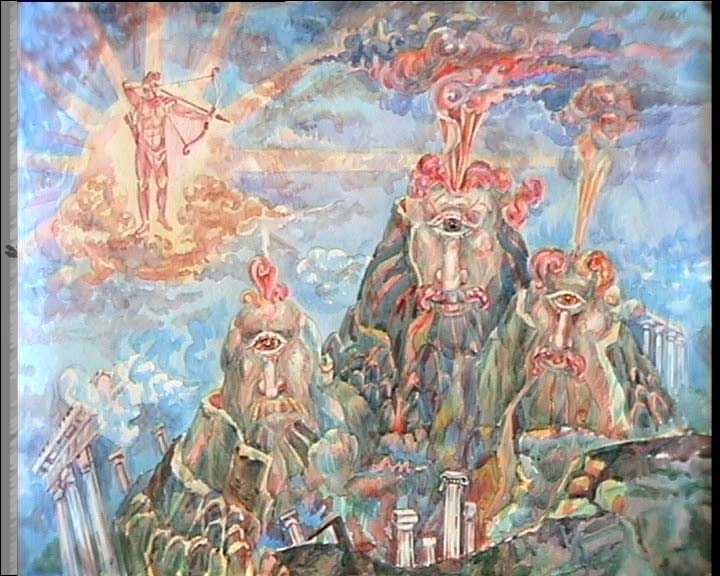
This site
contains texts about images of Indo-European (Greek, Celtic, Scandinavian, Balt, Slav, Italic, Etruscan, Hittite, Persian, Scythian, Indian, Thracian, Armenian) gods in history, literature and art, influence on destinies of peoples and civilisations, their dying in consciousness of people and new revival, relationship with images of world religions. This family of peoples is similar great tree with a mighty root. The Indo-Europeans have appeared on historical arena as warriors on fighting chariots and continue to play a great role for life of modern mankind. Having settled on extensive spaces of Europe and Asia the Indo-Europeans were divided into set of peoples. Each of these peoples has left the unique trace in a history and culture of mankind. What unites them? It is Mythology. Ancient Indo-European gods, having received new sounding, in accordance with various historical ways of the admirers, have kept deeply related fig. Therefore we have the right, speaking about Scandinavian Odin, for example, to compare to him Greek Hermes, Roman Mercury, Celt Lugh and even Indian Yama.

Apollo defeats cyclops. (A. Fantalov, water-colour, 2001).
Globalization: problems of politics, mythology, art.
Indo-European mythological: studies and texts on-line.
Thracian, Dacian, Illyrian, Scythian and Alanian mythologies.
Realism, abstractionism and art deco in the history, the theory and the practice of the fine art.
Abstractionism: painting and drawing.
School pictures dedicated to myths.
The Main menu:
The Indo-European history:
The German-Scandinavians history
The Scytho-Sarmatians history.
The Myths:
Myths and the modernity:
Odin and Christ. Images on Sweden runic stones.
Odin and Hermes. Images of an architectural decor of Saint Petersburg and Moscow.
Comparative-historical mythology:
The Summary table of the Indo-European gods.
The Basic types of the Indo-European gods.
Indo-European mythologies: genesis and evolution of characters.
CULTURE of BARBAROUS EUROPE: TYPOLOGY of MYTHOLOGICAL CHARACTERS (the Text of the thesis):
Chapter 1. Barbarous Europe and typology problem of mythological characters:
1.1. Barbarous Europe, and its cultural worlds.
Chapter 2. Mythological characters of West European barbarians:
2.1. Iconography origins of the basic mythological types.
2.2. Mythological characters in Celtic culture.
Mythological characters in Irish sagas.
2.2. Mythological characters in Germanic-Scandinavian culture.
Characters of gods in the Scandinavian mythological texts.
Images of gods in the Scandinavian mythological art.
Education programs:
Mythologies of peoples of Northern Europe - education program.
For consultations or tutoring: history, political science, cultural science, art criticism, painting and theories of composition; purchase of pictures and also installing of advertising - E-mail:
fantalov@hotmail.com